what tools do you need to make your own bead wrap chain
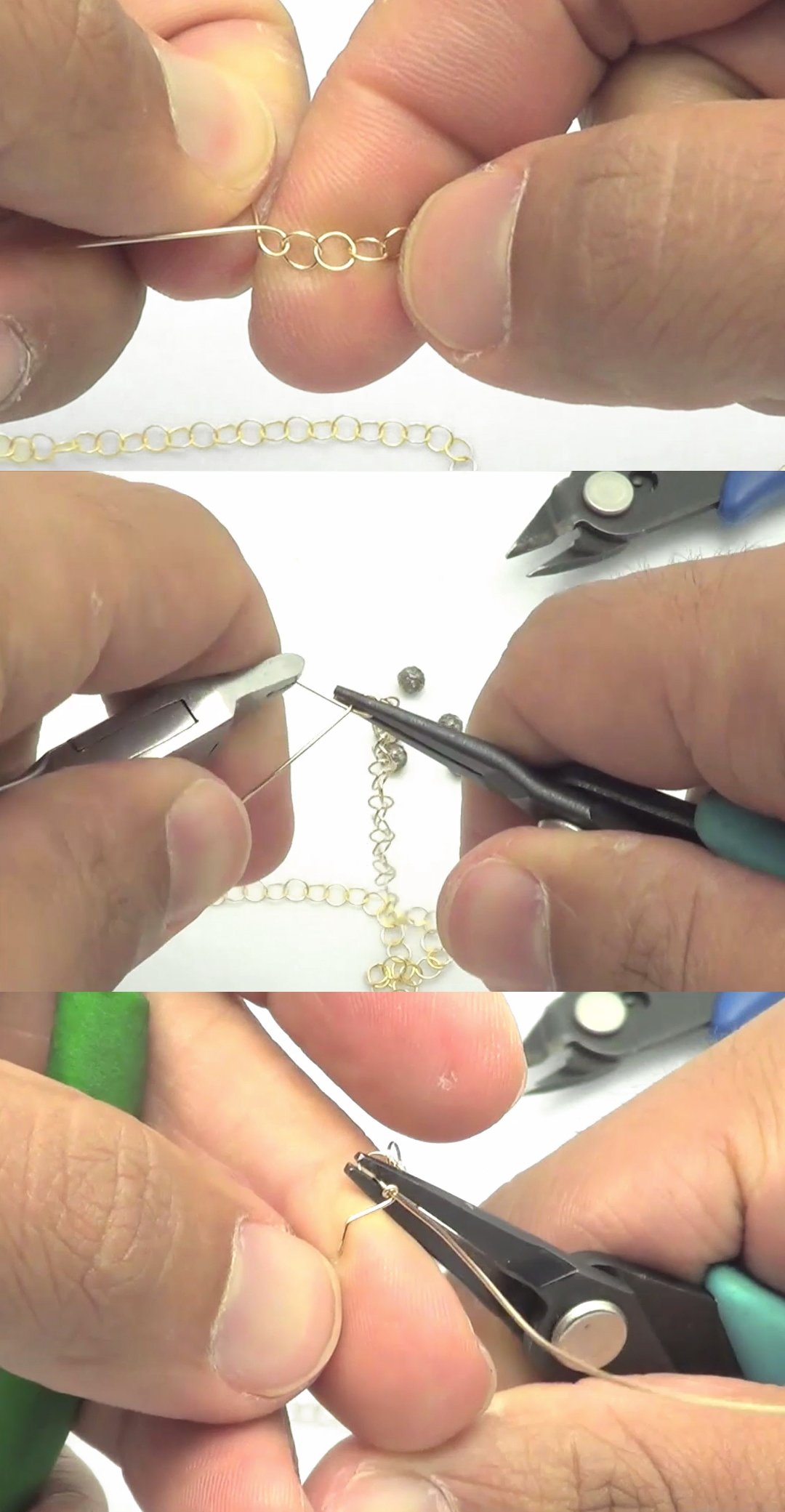
Today nosotros volition exist showing you how to wire wrap a bead onto a plain link chain, but you can utilise the same techniques in this tutorial to make your own chains from scratch using merely wire and beads. This is a really important skill all jewelry designers should have because y'all can apply it to so many different designs. The all-time office is that it'due south really easy once you lot get the hang of it and looks and then clean when its finished.
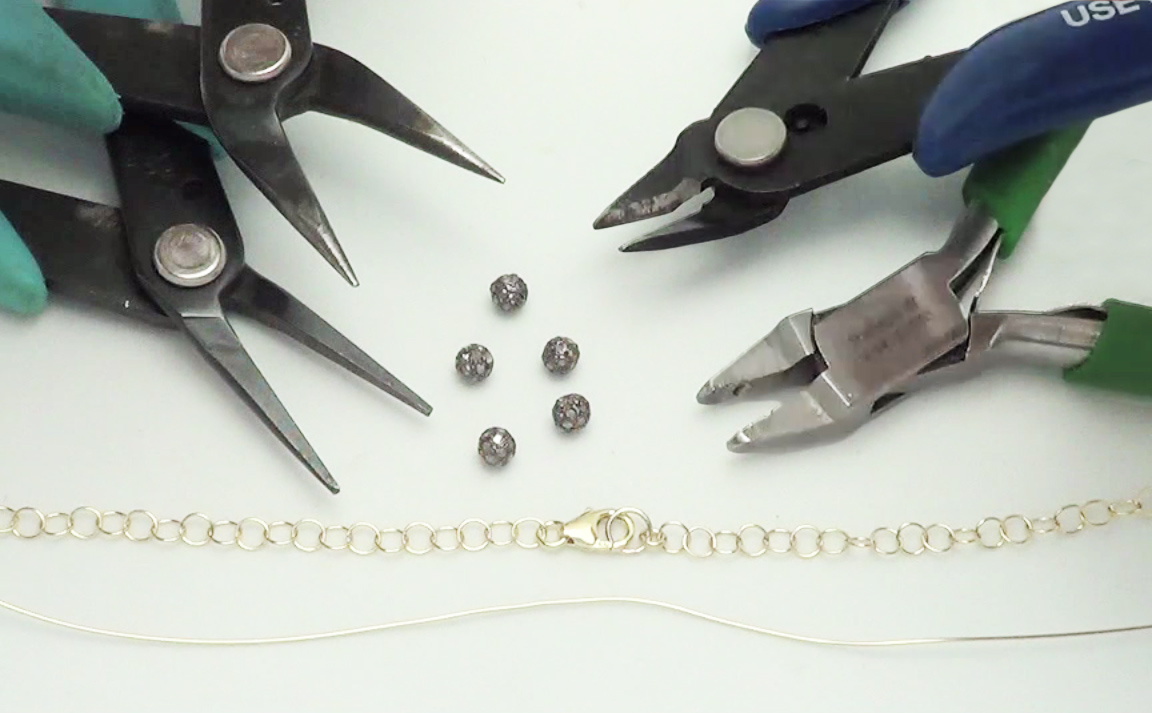
- Round Wire. We are using 22 gauge half difficult for this type of wire wrapping because information technology holds its shape much better than soft temper wire. If your beads are smaller, or take smaller holes, you can employ a thinner Gauge from 24G down to 28G.
- Link Chain, preferably in the same metal as the wire yous are using.
- A Dewdrop with a middle-drilled hole. Nosotros are using a Circular 6mm pave diamond bead.
- Jewelry Tools: Ane Circular Nose Plier, One Flat Nose Plier, and a Wire Cutter
And then lets get to making the loop! Start by putting the wire on the round olfactory organ and bending it into a circle. The size of the loop doesn't accept to exist perfect on the kickoff effort, you can all the same adjust it at this signal. But make certain you lot leave effectually a quarter inch or half inch after the loop to complete the wrap.
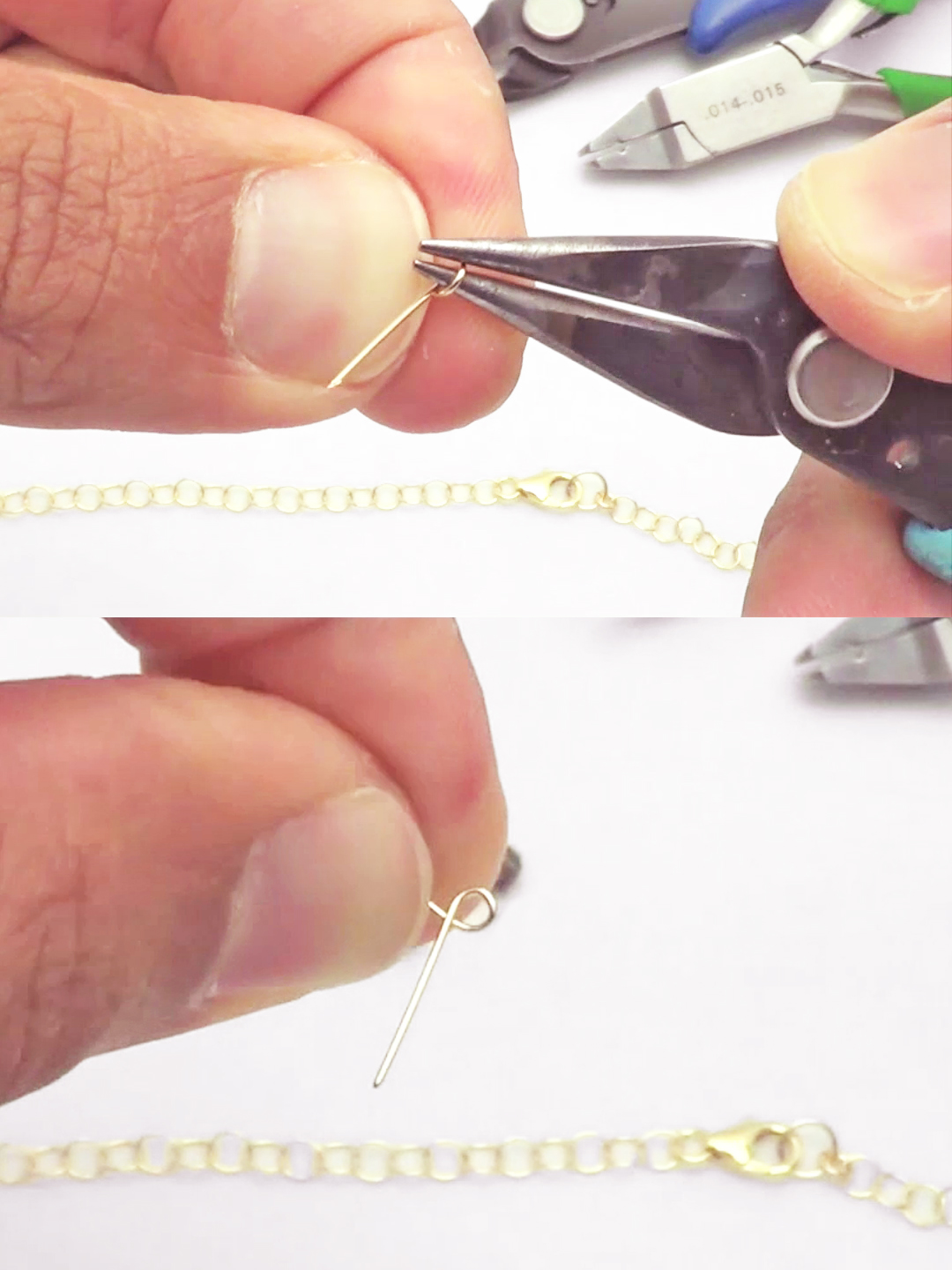
After y'all brand the loop the size you want, pull the chain into the loop like this and grab the loop finish of the wire like this using your flat nose plier. Catch the short end of the loop using a apartment nose or circular nose plier and wrap it in a neat whorl like this. You should only be bending the short cease, the long end should stay straight. I am but going to show you what it looks like with a single coil now considering later on y'all exercise more than than one coil, it becomes hard to become dorsum.
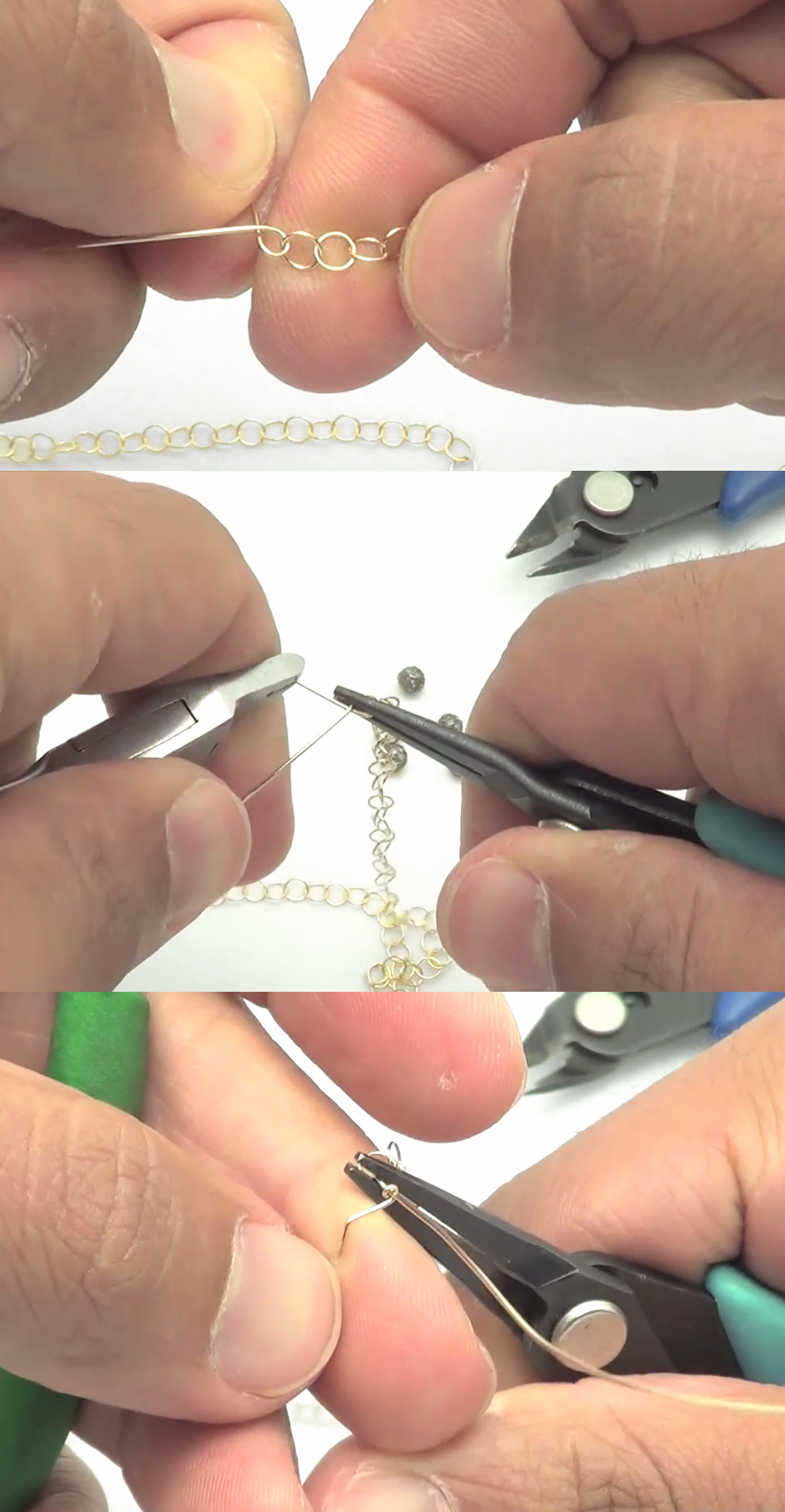
Anyways, this looks good so we will go on with one more than curl to make sure it'due south nice and strong. As I mentioned before, nosotros are using 22G wire which is on the thicker side, so two coils is fine. For thinner gauges like 26G or 28G it'southward probably better to do 2 or 3 coils depending on how much weight the wire wrap needs to bear. Thicker gauges may merely require ane or two coils to be rubber. We are almost half fashion there. We can cut off this short end, just remember to wear rubber glasses because y'all don't desire bits of wire flight in your face. Office of the wire is nonetheless sticking out and we volition just flatten it with the flat nose.
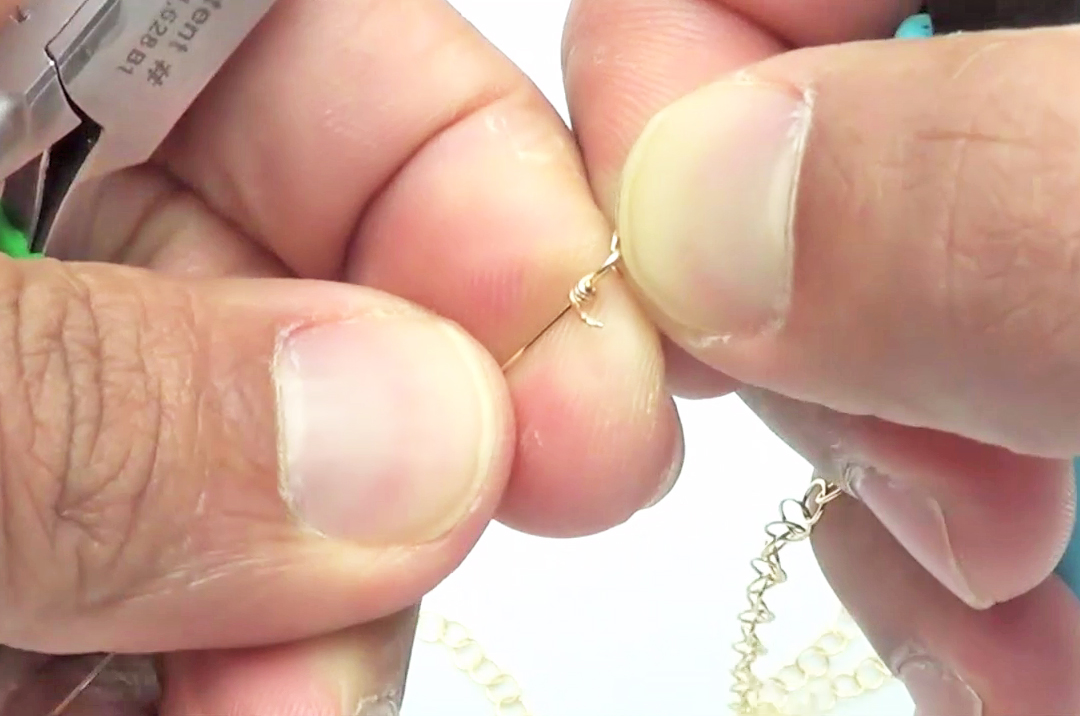
Later we exercise that, y'all can put the bead into the wire and we volition basically repeat the steps from earlier. The merely difference this time is when you are making your loop, you need to leave a petty bit of space to allow for those two coils. Again, you don't need to go it right on the offset endeavor—you can make your loop and accommodate it afterwards before you make your coil.
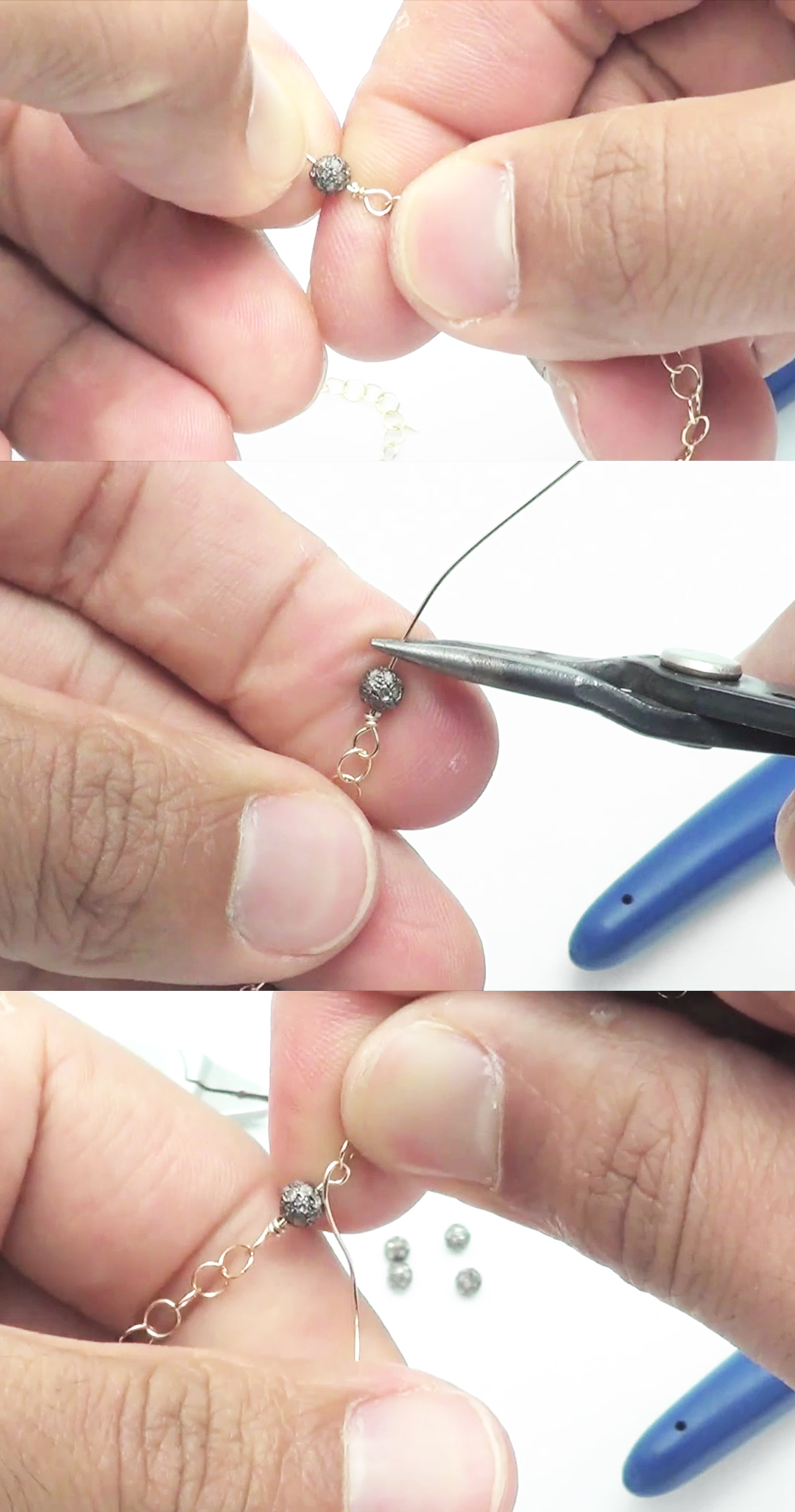
Hold the loop with the flat nose only similar the showtime time effectually and pull the loose end around. After we accept those ii loops I volition but tighten it with the flat nose and cutting it correct where the tertiary roll would take begun.
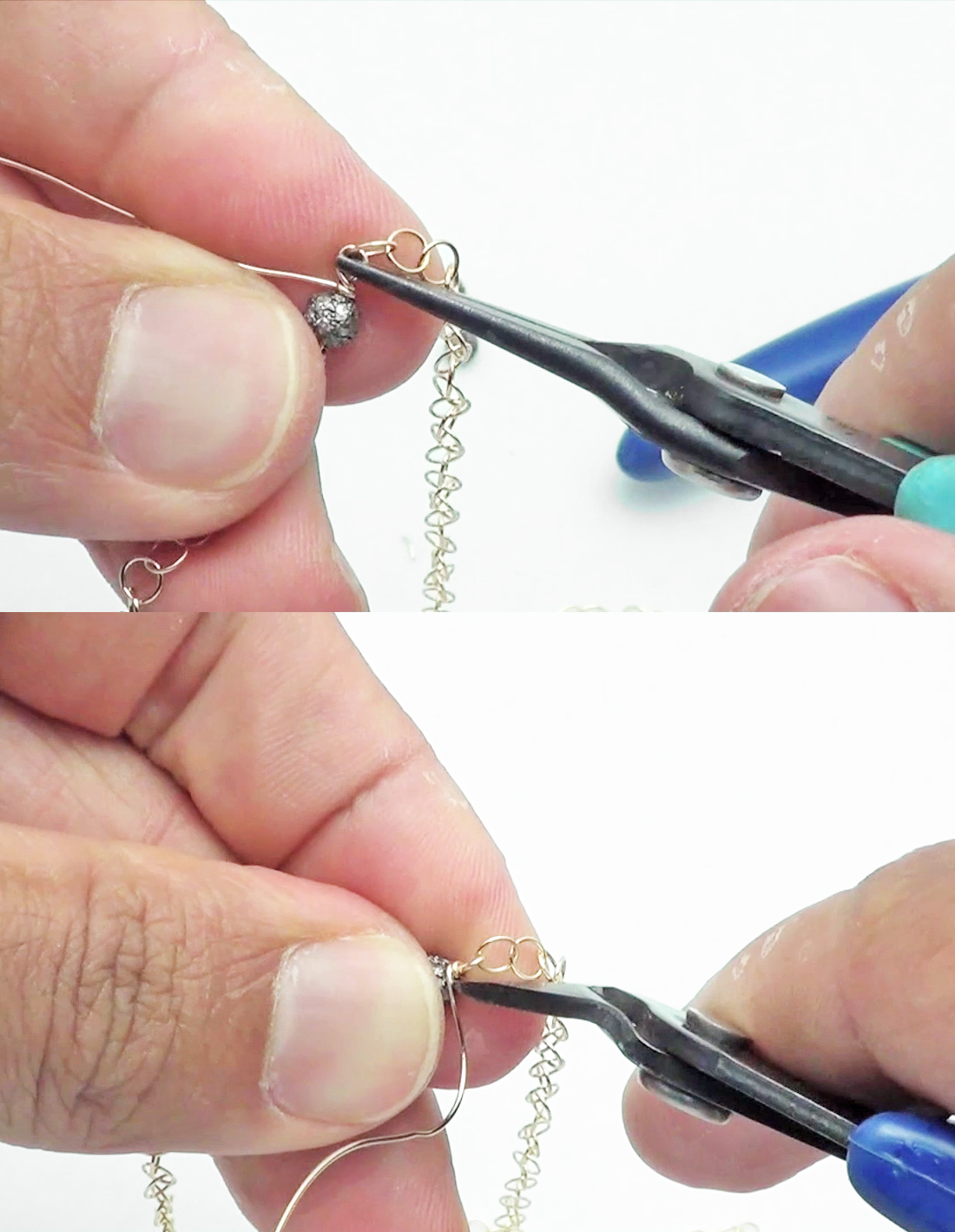
Bonus Tip: A piffling trick that I do is that I don't actually cut this stop of the wire considering its hard to make it there. I just leave a small mark that is not enough to actually cut through and I kind of bend information technology back and forth until information technology breaks on the weak spot that I left. This way the wire that is left over at the end is shorter and easier to tuck in with the flat olfactory organ. It also wastes less wire and so that we accept more for our next wire wrap. So I will do that hither and we are done!
To Sum things Upwards…
This tutorial ran a petty flake long simply when you go used to information technology, they will take a minute each or even less. As you practise more of these, your wraps will be more even, you volition become more comfy with different gauges, and you will work much faster. This is actually a example of practise makes perfect.
For all the jewelry components y'all come across in this tutorial, visit https://www.gempacked.com
-Cyrus Nemani, Gempacked
mansfieldhiceivien77.blogspot.com
Source: https://www.gempacked.com/blog/how-to-wire-wrap-a-bead-on-to-a-link-chain-wire-wrapping-101/
0 Response to "what tools do you need to make your own bead wrap chain"
Enviar um comentário